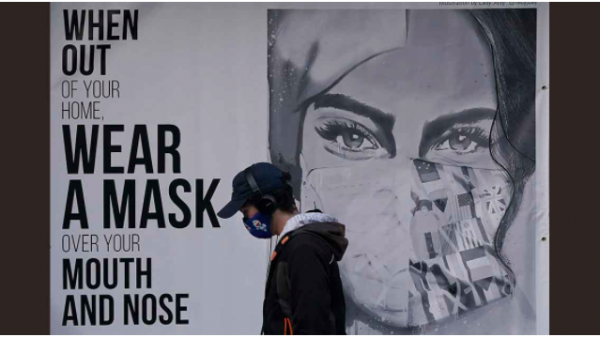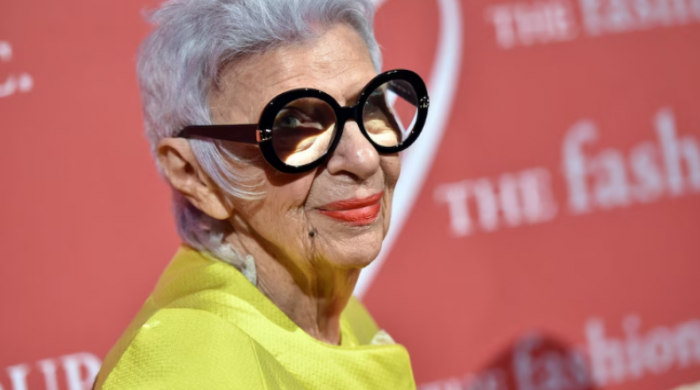Public health officials, fact checkers and doctors tried to quash hundreds of rumors in myriad ways. But misinformation around the pandemic has endured as vexingly as the virus itself. And with the U.S., U.K. and Canada rolling out vaccinations this month, many falsehoods are seeing a resurgence online.
A look at five stubborn myths around COVID-19 that were shared this year and continue to travel:
MYTH: MASKS DON’T OFFER PROTECTION FROM THE VIRUS
In fact, they do.
However, mixed messaging early on caused some confusion. U.S. officials initially told Americans they did not need to wear or buy masks, at a time when there was a shortage of N95 masks for health workers. They later reversed course, urging the public to wear cloth masks and face coverings outside.
The early messaging gave people “a little more room to take up these narratives” against wearing masks, explained Stephanie Edgerly, a communications professor at Northwestern University.
Some social media users, for example, are still circulating a video from March of Dr. Anthony Fauci, the U.S. government’s top infectious disease expert, saying people “should not be walking around with masks,” although he has since urged people to cover their faces in public. Versions of that clip have been watched millions of times on Facebook, YouTube and Twitter.
Online claims that masks are not an effective form of protection spiked again in October after U.S. President Donald Trump and two U.S. senators contracted COVID-19 during a Rose Garden ceremony, according to media intelligence firm Zignal Labs. Social media users claimed that the coverings must not be effective because the senators wore masks at some points during the event.
But masks do prevent virus particles from spreading. Last month, the U.S. Centers for Disease Control and Prevention, which continues to advise Americans to wear masks, cited research that suggested masks can protect the wearer as well as other people.
MYTH: THE VIRUS WAS MAN-MADE
It was not.
Social media users and fringe websites weaved together a conspiracy theory that the virus was leaked — either accidentally or intentionally — from a lab in Wuhan, China, before the World Health Organization declared COVID-19 a pandemic in March. The falsehood was espoused by elected officials, including Trump.
The origins of the virus are far less scandalous: It likely originated in nature. Bats are thought to be the original or intermediary hosts for several viruses that have triggered recent epidemics, including COVID-19. U.S. intelligence agencies also concluded the virus is not man-made.
Yet the conspiracy theory continues to travel online, and made a resurgence in September when a Chinese virologist repeated the claim on Fox News.
MYTH: COVID-19 IS SIMILAR TO THE FLU
In fact, COVID-19 has proved to be far deadlier.
Early similarities between the symptoms of COVID-19 and influenza led many to speculate that there was not much difference between the two illnesses. Social media posts and videos viewed thousands of times online also claim that COVID-19 is no deadlier than the flu. Trump tweeted a faulty comparison between the flu and COVID-19 in March and October, as states implemented stay-at-home orders.
COVID-19 has been blamed for more than 300,000 American deaths this year, and has killed roughly 1.5 million worldwide. By comparison, the CDC estimates there are 12,000 to 61,000 flu-related deaths annually.
COVID-19 symptoms can be far more serious and persist for months. Health experts have also uncovered a range of bizarre coronavirus symptoms, from brain fog to swollen toes.
MYTH: OFFICIALS ARE EXAGGERATING COVID-19’S TOLL
They are not.
Social media users began photographing empty hospital waiting rooms earlier this year, claiming few people were sick with COVID-19. The photos and videos gained traction with the #FilmYourHospital hashtag, part of a right-wing conspiracy theory that public health officials and politicians were exaggerating COVID-19’s deadly toll. But fewer people are in waiting areas because hospitals started taking appointments virtually, canceling elective procedures and prohibiting visitors during the pandemic.
This month, a Nevada doctor’s selfie at an empty makeshift care site set up to handle additional coronavirus patients was shared online as evidence that hospitals are not full. However, the photo was taken on Nov. 12, before the site opened. It has since served at least 200 patients.
MYTH: THE VIRUS IS A PLOY TO FORCE GLOBAL VACCINATIONS
That’s not true.
Anti-vaccine supporters have been pushing this conspiracy theory since January, when some falsely claimed online that the virus had been patented by pharmaceutical companies as a scheme to cash in on the illness. Some targeted billionaire and vaccine advocate Bill Gates, claiming he was part of a global plan around COVID-19 to microchip billions of people through mass vaccinations. Gates has not threatened to microchip anyone. Instead, he suggested creating a database of people who have been inoculated against the virus.
Skepticism also has grown around the speed of vaccine development. A video viewed nearly 100,000 times on social media, for example, falsely claimed pharmaceutical companies skipped animal trials for the vaccines. In fact, the vaccines were tested on mice and macaques.
The U.K., Canada and the U.S. Food and Drug Administration have authorized Pfizer’s coronavirus vaccine. The FDA will review Moderna’s shot Thursday.
Still, only about half of Americans say they are willing to get the vaccine, according to a survey this month by The Associated Press-NORC Center for Public Affairs Research.
Ongoing misinformation around the vaccine might drive some of that hesitancy.
“I don’t think it was one myth that caused the problem,” said Nancy Kass, deputy director for public health at the Johns Hopkins Berman Institute of Bioethics. “It’s the fact that there were many, many, many myths.”























